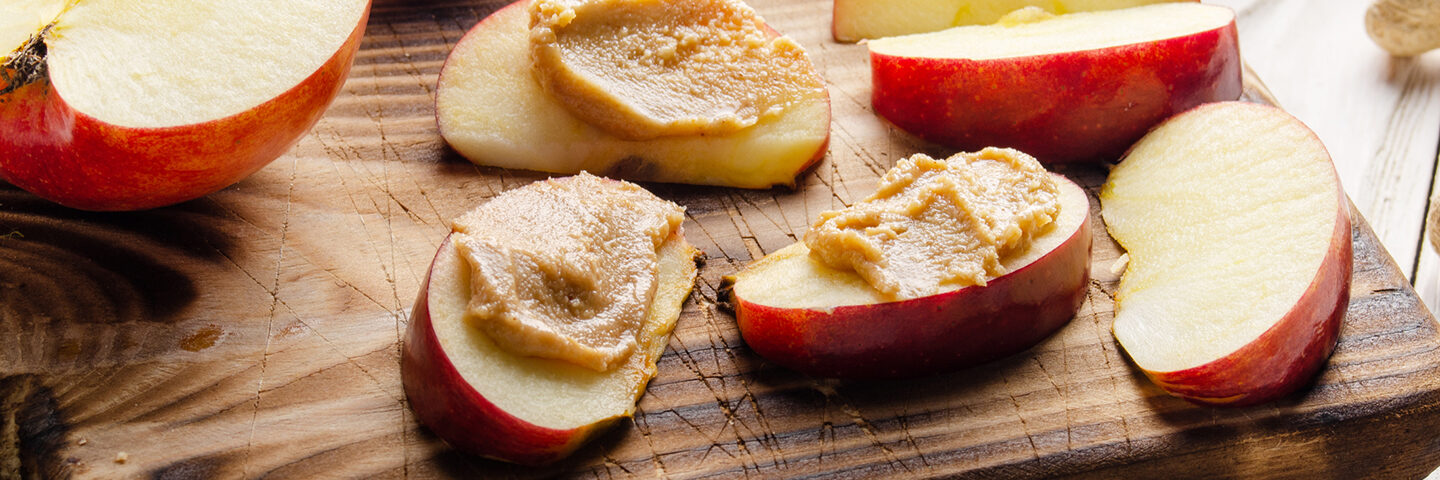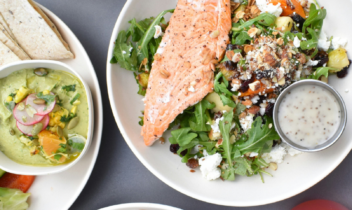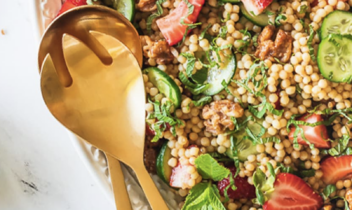
How Can Peanuts Help Kids Eat More Fruits & Veggies?
Answer
Written By Sherry Coleman Collins, MS, RDN, LD
According to the Produce for Better Health Foundation’s State Of The Plate report, Americans’ consumption of produce has declined by 10% since 2004 when reporting first began.1 Young children, historically higher fruit consumers, are eating less fruit than in years past, while eating episodes that include vegetables are also down. This is resulting in an overall decline in nutrient and fiber-rich fruits and vegetables, potentially exacerbating deficiencies in key nutrients for growth.
There are a variety of factors that are driving the decline in consumption, but whatever the reasons, it’s important to find ways to proactively turn it around. Here are a few great tips for helping kids eat more produce:
- Serve produce in a variety of forms, such as cooked and raw, chopped and pureed. Children may love frozen peas, even if they initially reject them when presented cooked. Serve foods raw or lightly steamed with dips (Peanut Butter Vanilla Yogurt Dip), prepared as patties or waffles (Peanut Butter Veggie Waffles), in soup (African Peanut Stew), and smoothies (Green Monster Smoothie Bowl) too.
- Make it fun! Get kids involved by letting them make suggestions for the menu. Try giving veggies fun names. For instance, x-ray vision carrots are a lot more exciting than sauteed carrots. Everyone loves Ants on a Log. Even if it’s the same recipe, calling it something fun automatically makes it more fun! Model how much you love eating fruits and vegetables in an authentically enthusiastic way (but don’t fake loving lima beans if you’re not really a fan). The adage, “more is caught than is taught” is true when it comes to healthy eating.
- Pair produce with another food they already love, like peanut butter. Try adding fresh fruit like berries to PB&J sandwiches or make open faced peanut butter toast topped with sliced bananas. Consumer research by the National Peanut Board showed that children are more likely to eat fruits and vegetables when they’re paired with their favorite peanut dip. Try this nutrient-packed cinnamon peanut butter dip with sliced apples and pears, carrot and jicama sticks for a delicious after-school snack or a snack-meal your whole family will love.
As you incorporate these tips remember that it’s developmentally appropriate for children to reject some foods – even after they initially enjoyed them. Young children are learning autonomy, boundaries, and their palates are evolving. It’s important to keep trying. Studies show that multiple exposures are a successful strategy to increase acceptance of fruits and vegetables.2 It’s not uncommon for children to reject some foods because of texture (especially if only purees are offered in the first months of complementary feeding) or because of sour or bitter flavors. Moreover, just because a child doesn’t like something at first, doesn’t mean they won’t like it later. Regardless of the texture or flavor, all fruits and vegetables can be presented in ways that increase palatability for the particular palate of young children. Variety and diversity are essential building blocks for good health and a healthy palate, including promoting acceptance of fruits and vegetables.
The latest Dietary Guidelines for Americans recommend feeding babies peanut-containing foods starting as early as 4-6 months to reduce the risk of developing a peanut allergy. Learn more about how and why to introduce peanut foods safely at PreventPeanutAllergies.org. From the start, pairing peanut foods with produce is a great way to get more bang for every bite by adding creamy peanut butter to purees like pumpkin, butternut squash, and applesauce.
References
-
State of the Plate: America’s Fruit and Vegetable Consumption Trends. Produce for Better Health Foundation Website. Available at https://fruitsandveggies.org/news/the-state-of-the-plate-new-research-reveals-americas-fruit-vegetable-consumption-is-eroding/. Accessed July 20, 2022.
-
Moding K, Birch L, Stifter C. Infant temperament and feeding history predict infant responses to novel foods. Appetite. 2014;83:218-225.
-
USDA HHS, Dietary Guidelines for Americans, 2020-2025. Available at https://www.dietaryguidelines.gov/sites/default/files/2021-03/Dietary_Guidelines_for_Americans-2020-2025.pdf. Accessed July 20, 2022.


